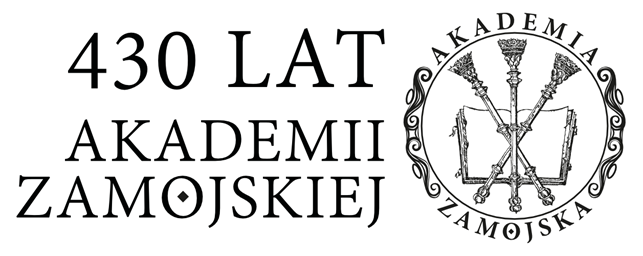Alessi A., The Dream Factory. Alessi since 1921, Milan 2016.
Castillo G., Cold War on the Home Front: The Soft Power of Midcentury Design, Minneapolis, MN-London 2010.
Collins M., Towards Post-modernism. Design since 1851, London 1994.
Conrads U. (ed.), Programs and Manifestoes on 20th-Century Architecture, Cambridge, MA 1975.
Daniel R.M., Herman Miller’s Action Office: Corporate Interiors in the Cold War, „Interiors: Design”, 6 (2015), no. 1, s. 5-20, https://doi.org/10.2752/204191115X14218559960114.
DOI: https://doi.org/10.2752/204191115X14218559960114
Doesburg T. van i in., De Stijl Manifesto, „De Stijl”, 2 (1918), nr. 1, s. 4.
Eco U., Dopiski na marginesie Imienia róży, w: tegoż, Imię róży, tłum. A. Szymanowski, Warszawa 1996, s. 593-623.
Friedman A.T., Women and the Making of the Modern House: A Social and Architectural History, New Haven, CT-London 2006.
Giacobbi S., Franco Fornari’s Theoretical Thought: Psychoanalytic Research and Its Proposals of Reconciliation and Integration of Nurture with Nature, „Sigmund Freud House Bulletin”, 11 (1987), no. 1, s. 35-41.
Gropius W., Pełnia architektury, tłum. K. Kopczyńska, Kraków 2014.
Ingels B., Yes is More: An Archicomic on Architectural Evolution, Berlin 2009.
Jameson F., Postmodernism and Consumer Society, in: Modernism/Postmodernism, ed. P. Brooker, London 2014, s. 163-179.
Jarczewski A., Yes Is More Comics as an Architectural Manifesto, „Architectus”, 2021, no. 2(66), s. 105-112, http://dx.doi.org/10.37190/arc210211.
DOI: https://doi.org/10.37190/arc210211
Keedy J., Modernizm żywych trupów, tłum. D. Żukowski, w: Widzieć/Wiedzieć. Wybór najważniejszych tekstów o dizajnie, red. P. Dębowski, J. Mrowczyk, Kraków 2011, s. 141-159.
Keyser S.J., The Mental Life of Modernism, Cambridge, MA-Londyn 2020.
DOI: https://doi.org/10.7551/mitpress/11966.001.0001
Le Corbusier, W stronę architektury, tłum. T. Swoboda, Warszawa 2012.
Lee S., Architecture in the Age of Mediatizing Technologies, New York 2024.
DOI: https://doi.org/10.4324/9781003200567
Lin M., Hsu Y., Exploring Emotional Responses on Empathic Objects, in: Futureground – Design Research Society International Conference 2004, 17-21 November, Melbourne, Australia, eds. J. Redmond, D. Durling, A. de Bono, Melbourne 2004, s. 143-154.
Mendini A., Manifesto di Alchimia, Mediolan 1985, www.ateliermendini.it/index.php?mact=News,cntnt01,print,0&cntnt01articleid=240&cntnt01showtemplate=false&cntnt01lang=en_US&cntnt01returnid=186 [dostęp: 14.11.2024].
Moliterno G. (ed.), Encyclopedia of Contemporary Italian Culture, London 2000.
Neutra R., Survival through Design, New York 1954.
Powers A., Bauhaus Goes West: Modern Art. And Design in Britain and America, London 2019.
Puente M. (ed.), Conversations with Mies van der Rohe, New York 2008.
Radice B. (ed.), Elogio del banale, Torino-Milano 1980.
Sadler S., Archigram: Architecture without Architecture, MIT Press, Cambridge, MA 2005.
Strauss C., Radical: Italian Design 1965-1985: The Dennis Freedman Collection, New Haven, CT-London 2020.
Sullivan L.H., The Tall Office Building Artistically Considered, „Lippincott’s Magazine”, 57 (March 1896), s. 403-409.
Ventura J., Shvo G., Breaking the Language of Design: Semioclastics in the World of Industrial Design, „International Journal of Design Creativity and Innovation”, 4 (2015), issue 3-4, s. 222--233, https://doi.org/10.1080/21650349.2015.1026942.
DOI: https://doi.org/10.1080/21650349.2015.1026942
Vignelli M., Niech żyje modernizm!, tłum. K. Szymaniak, A. Puchejda, w: Widzieć/Wiedzieć. Wybór najważniejszych tekstów o dizajnie, red. P. Dębowski, J. Mrowczyk, Kraków 2011, s. 109-113.
Winnicott D.W., The Use of an Object, „International Journal of Psychoanalysis”, 50 (1969), no. 4, s. 711-716.
Wright F.L., Architektura nowoczesna. Wykłady, tłum. D. Żukowski, Kraków 2015.
Yang Y., Xie Z., The Rebellious Journey: Archizoom Associati and Andrea Branzi, “IOP Conference Series: Materials Science and Engineering”, 573 (2019), no. 1, 012077, https://doi.org/10.1088/1757-899X/573/1/012077.
DOI: https://doi.org/10.1088/1757-899X/573/1/012077



 Język Polski
Język Polski
 English
English
